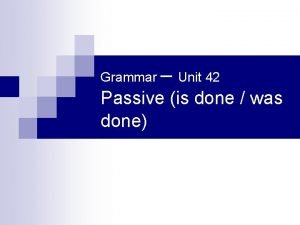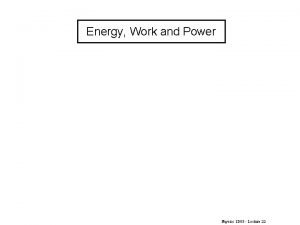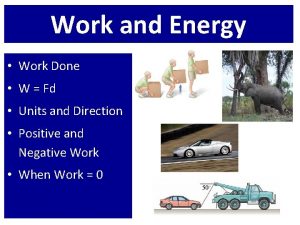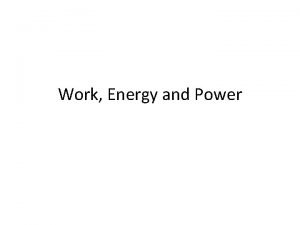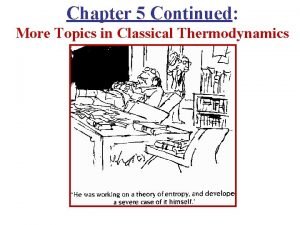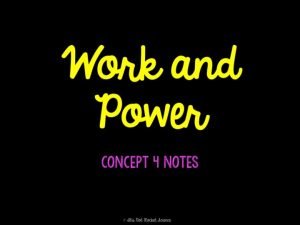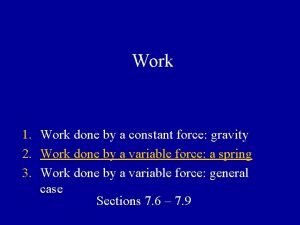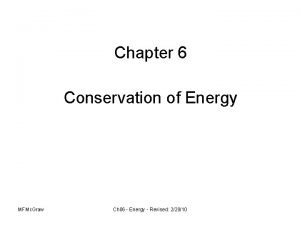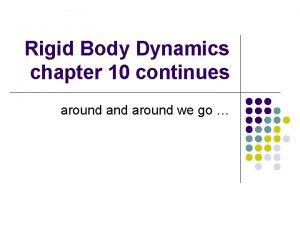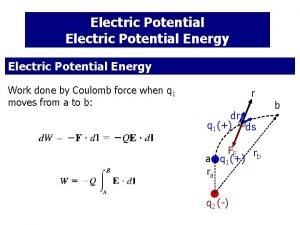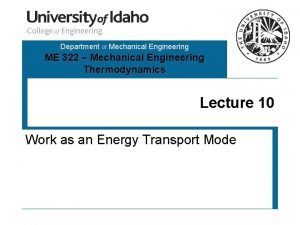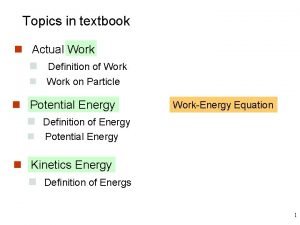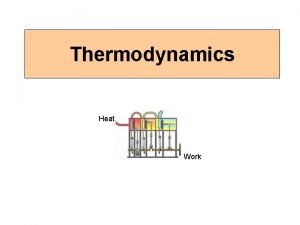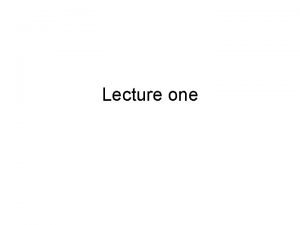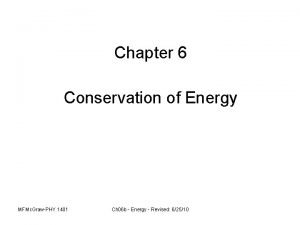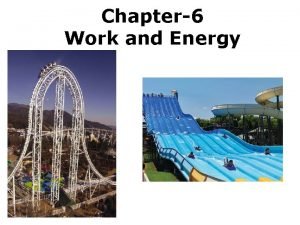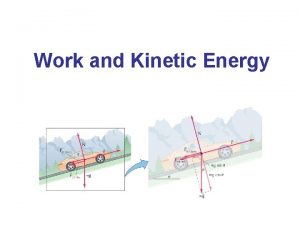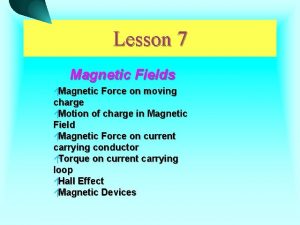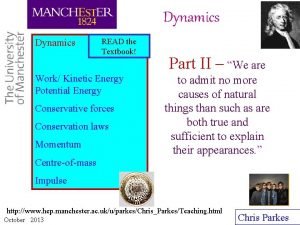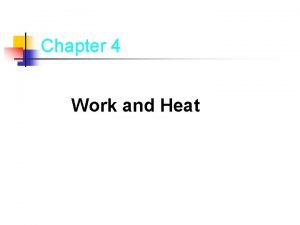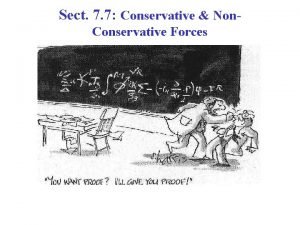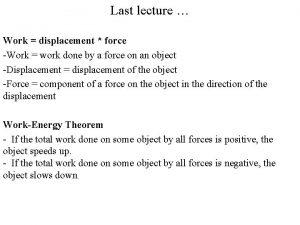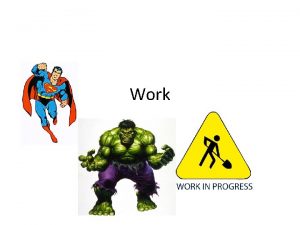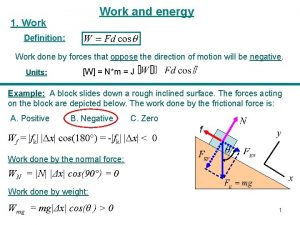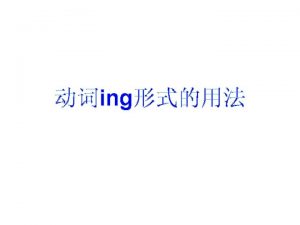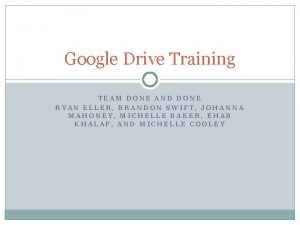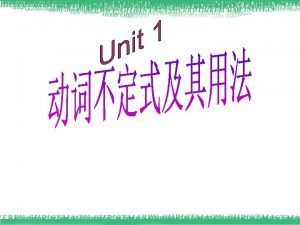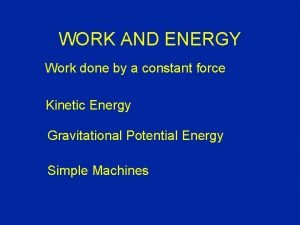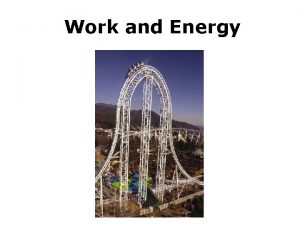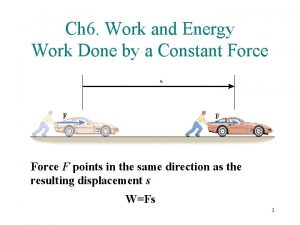WORK Work Work W is done when a




























- Slides: 28

WORK

Work Work, W, is done when a force makes an object move from one place to another.

Work Work, W, is done when a force makes an object move from one place to another. Eg – A person does work when they push a grocery trolley.

Work Work, W, is done when a force makes an object move from one place to another. Eg – A person does work when they push a grocery trolley. Whenever work is done, energy is changed from one form to another.

Work Work, W, is done when a force makes an object move from one place to another. Eg – A person does work when we push a grocery trolley. Whenever work is done, energy is changed from one form to another. The change in energy is equal to the work done, so both work and energy are measured in the same unit (joule, J)

Work The amount of work done depends on the size of the force being used and the distance moved by whatever the force is acting on.

Work The amount of work done depends on the size of the force being used and the distance moved by whatever the force is acting on. The greater the force used or the greater the distance moved, the greater the work done.

Work The amount of work done depends on the size of the force being used and the distance moved by whatever the force is acting on. The greater the force used or the greater the distance moved, the greater the work done. W = Fd

Work The amount of work done depends on the size of the force being used and the distance moved by whatever the force is acting on. The greater the force used or the greater the distance moved, the greater the work done. W = Fd F – force in Newtons D – distance in metres W – work done in joules.

Example 1. A car is pushed from stationary, by a net force of 2000 N. Calculate the kinetic energy of the car after it has travelled 3 m across the ground.

Example 1. A car is pushed from stationary, by a net force of 2000 N. Calculate the kinetic energy of the car after it has travelled 3 m across the ground. W = Fd = 2000 x 3 = 6000 J The work done equals the energy changed, and so the kinetic energy of the car is 6000 J

Question 1. a) b) Two girls drag a boat 20 m along the beach at a steady pace. They each pull with a force of 50 N. Calculate the total work done by the girls Explain what energy change takes place.

Question 1. a) Two girls drag a boat along the beach at a steady pace. They each pull with a force of 50 N. Calculate the total work done by the girls Answer: W = Fd = 2 x 50 x 20 = 2000 J b)

Question 1. a) b) Two girls drag a boat along the beach at a steady pace. They each pull with a force of 50 N. Calculate the total work done by the girls Explain what energy change takes place. Answer: W = Fd = 2 x 50 x 20 = 2000 J

Work is also done whenever an object is lifted.

Work is also done whenever an object is lifted. The work done is the energy changed – when an object is lifted, the energy change is the gravitational potential energy gained by the object.

Work Work is also done whenever an object is lifted. The work done is the energy changed – when an object is lifted, the energy change is the gravitational potential energy gained by the object. This means the size of the force needed to lift the object is equal to the weight of the object.

Example An object of mass 5 kg is lifted 2 m off the floor. Calculate the energy gained from the work done on the object.

Example An object of mass 5 kg is lifted 2 m off the floor. Calculate the energy gained from the work done on the object. The weight of the object = mg = 5 x 10 = 50 N

Example An object of mass 5 kg is lifted 2 m off the floor. Calculate the energy gained from the work done on the object. The weight of the object = mg = 5 x 10 = 50 N So, the force needed to lift the object is 50 N

Example An object of mass 5 kg is lifted 2 m off the floor. Calculate the energy gained from the work done on the object. The weight of the object = mg = 5 x 10 = 50 N So, the force needed to lift the object is 50 N The work done to lift the object = Fd = 50 x 2 = 100 J

Example An object of mass 5 kg is lifted 2 m off the floor. Calculate the energy gained from the work done on the object. The weight of the object = mg = 5 x 10 = 50 N So, the force needed to lift the object is 50 N The work done to lift the object = Fd = 50 x 2 = 100 J The work done equal the gain in energy of the object. The object has gained 100 J of gravitational potential energy.

Example An object of mass 5 kg is lifted 2 m off the floor. Calculate the energy gained from the work done on the object. The weight of the object = mg = 5 x 10 = 50 N So, the force needed to lift the object is 50 N The work done to lift the object = Fd = 50 x 2 = 100 J The work done equal the gain in energy of the object. The object has gained 100 J of gravitational potential energy. It would have worked if we had used Ep = mg h

Work If a force has been applied to an object but the object does not move, then, in scientific terms, no work has been done.

Work If a force has been applied to an object but the object does not move, then, in scientific terms, no work has been done. This is because no energy has been changed by the force, even though the person applying the force may start to feel tired.

Work If a force has been applied to an object but the object does not move, then, in scientific terms, no work has been done. This is because no energy has been changed by the force, even though the person applying the force may start to feel tired. The equation W = Fd can be used to find F when d and W are known.

Work § To calculate force, F, use F = W d W F § To calculate the distance, d use d = W § F d

Questions 1. 2. A car is pushed 2 m. The work done on the car is 800 J. Calculate the size of the force which moved the car. 40’ 000 J of work is done by a bulldozer on a load of dirt. The force on the load is 500 N. Calculate the distance the bulldozer moves the load.
 Is done was done passive 1
Is done was done passive 1 Colloid mill advantages and disadvantages
Colloid mill advantages and disadvantages Sen bir koyun olsan bende bir kuzu sözleri
Sen bir koyun olsan bende bir kuzu sözleri Physics 1d03
Physics 1d03 W=fxd
W=fxd Efficiency equation
Efficiency equation Adiabatic process work done
Adiabatic process work done I have done a lot of work today
I have done a lot of work today The work done by gravity during the descent of a projectile
The work done by gravity during the descent of a projectile Find mechanical energy
Find mechanical energy What enables work to be done
What enables work to be done Rigid body rotation formula
Rigid body rotation formula Potential energy of an electric field
Potential energy of an electric field What is a polytropic process in thermodynamics
What is a polytropic process in thermodynamics We our life work is done
We our life work is done Potential formula
Potential formula Work done definition
Work done definition Curve path
Curve path Work done pressure volume
Work done pressure volume If a runner exerts 350 j of work
If a runner exerts 350 j of work Definition of work in physics
Definition of work in physics Work done in adiabatic process
Work done in adiabatic process Work done by normal force
Work done by normal force Site:slidetodoc.com
Site:slidetodoc.com Work done and kinetic energy
Work done and kinetic energy Work done by magnetic field
Work done by magnetic field Work velocity formula
Work velocity formula Work done in polytropic process
Work done in polytropic process Conservative work
Conservative work
